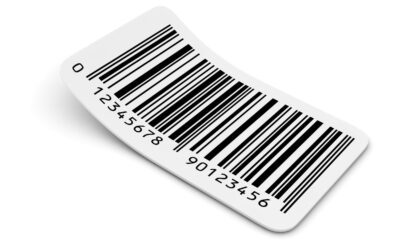
Keeping track of your assets’ history is hugely important. When you see which team members have used the assets and why you can get a clearer picture. With historical data surrounding each asset, it’s possible to make better-informed business decisions. However, keeping track of every single asset is not always that easy. This is where we can come in and help. Here at itemit, we are proud to offer you our asset tracking software.
Our asset tracking software can help you to keep track of every single asset. As a result, it will be possible for you to create historical data that can prove to be hugely beneficial.
Below, you can find details of how you too can keep track of your asset’s history.
Why You Need Historical Data
Businesses everywhere need historical data. Data such as this can help a business to make the right decisions for them. For example, when a business knows how many times they’ve used a piece of machinery they’ll understand whether another machine needs to be purchased.
- If a construction company never has enough tools to hand, the data can show this
- If a wholesaler always runs out of stock, the data can show this
- Should a business need to show how it has performed over the last year, the data can show this
All of the information that can be produced by our asset tracking software can help businesses immensely.
Keeping track of your assets’ history can also be useful if you wish to know how well an asset is performing. Let’s imagine that a printer located in an office does not always work. Users of our software can log in and see how many times the printer has failed. If the printer has undergone regular maintenance and it still does not work, it could be time to replace it. However, it may not be possible to understand just how often the printer breaks down without accessing our tracking software.
When our tracking software is used to create a history of each asset, it will be clearer just how well or badly each asset works. As a result, users can make a better-informed decision about whether to replace the printer or keep hoping that it works when required.

How to Create Historical Data
Creating historical data is easy. As soon as you start to use our tracking software, you begin to create data. Historical data will be created when:
- A user checks equipment out and back in again
- Assets are tracked
- Assets are organised into collections
- An issue is reported to the maintenance team
- An asset undergoes maintenance
- A maintenance schedule is set up
- Important date reminders are scheduled
- Asset profiles are added and edited
- Records are updated
- Bulk actions are created
As you can see, it is possible to create a lot of historical data when you use itemit’s tracking software. Thanks to the way that our software works, users can gain access to data created by individual assets or groups of assets. We know how useful having such information to hand can be. This is why we offer you and every other user the opportunity to create historical data this way.
How To Get Started
Getting started with itemit’s asset tracking software is relatively easy. All that you need to do is to create a profile for all of your assets. Once a profile has been created, a multitude of information can be added about each asset. This ensures that it’s possible to track each asset in a variety of ways.
As soon as an asset has been used or checked out for use, historical data is created. Did you know that you can export a range of reports using our asset tracking software? Reports such as these can help you to get a much clearer picture of each asset. As a result, you too can see how well your business is running and where improvements need to be made.
Use itemit’s Asset Tracking Software To Create Historical Data
When you want to keep a track of your assets’ history, you need to use software that works. This is where itemit’s asset tracking software can come in and help. Thanks to the way that the software works, it is entirely possible to create historical data with ease. In fact, the data can be created without you realising.
Reach out to our friendly and knowledgeable team today to hear just how well itemit can help you. You too can begin to keep track of your assets’ history with ease. You can contact our team at team@itemit.com. Alternatively, if you would like to get started you could sign up for our 14-day free trial. Simply fill in the form below and start keeping track of your assets’ history.

Try itemit
Choose a better way to track
your assets.
Start your free 14-day trial now!

Keep Learning
itemit Blog
Tips, guides, industry best practices, and news.
What Is Active RFID? A Complete Guide to Smart RFID Tags
Discover what Active RFID is, how active tags function, and the key benefits and use cases that make this technology essential for modern tracking systems.
Everything You Need to Know About 2D Barcodes
Discover everything about 2D barcodes, including how they work, their benefits, and how they are revolutionizing industries and improving business operations
Complete Guide to Asset Lifecycle Management and Its Benefits
Learn about asset lifecycle management and how it helps businesses optimize asset usage, reduce costs, and improve efficiency throughout the asset’s life.



